A month or so ago Charles Aprill (New Orleans) posted a really nice picture of two “Dancing Indian” colognes (below) in aqua and cobalt blue. I have always admired this bottle because of the strong embossing and name. I placed this image within The Charles & Jane Aprill Blue Gallery on this site and on another page called Cool Bottle Embossings hoping to circle back later and develop a specific post on the Dancing Indian.
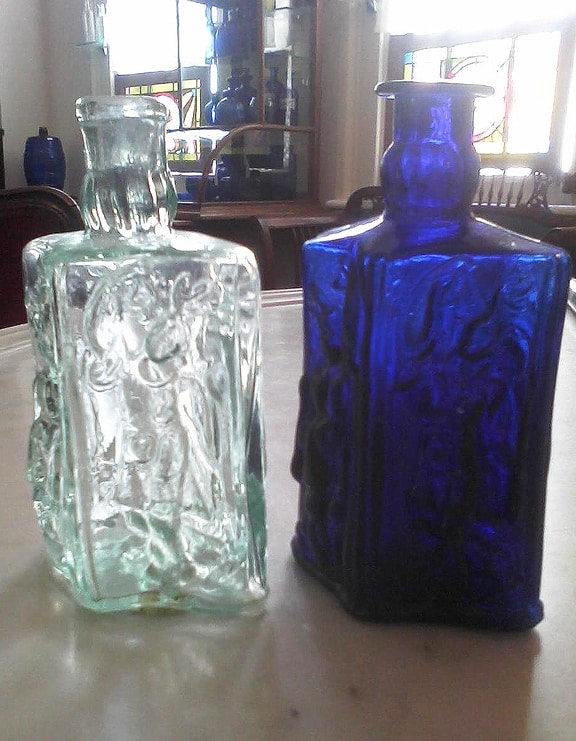
Dancing Indian cologne. The blue one is mint, perfect. Jane got this at a Las Vegas show in the late 70’s. The dealer was a western dude covered with Turquoise jewelry (watchband, bracelet, neck piece, belt buckle and more. Provenance unknown. – Aprill Collection
Last weekend I made contact with Gary Katzen and he was able to provide a picture (see below) and information regarding his “Dancing Indian” cologne in milk glass. Gary describes it as the whitest of white opaque glass, attributed to Stanger glass works; circa 1848-1853.
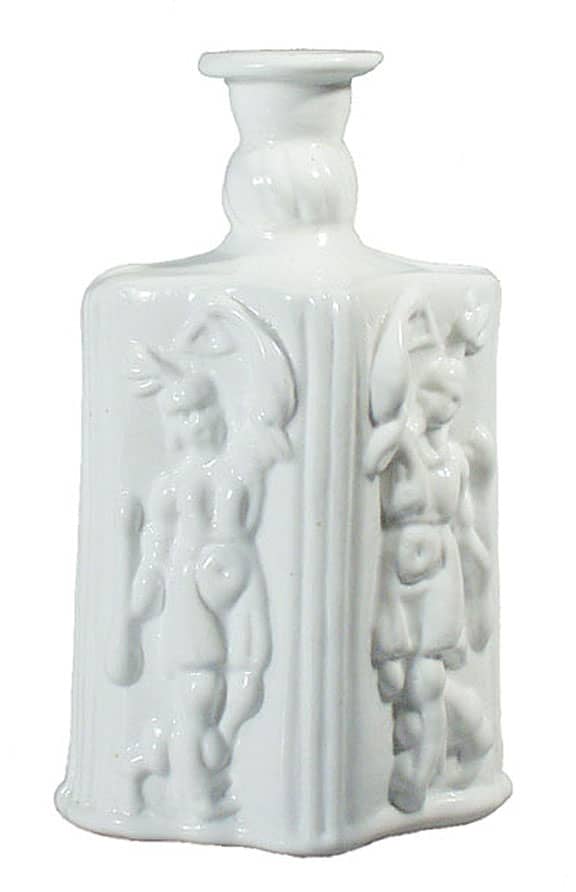
This is Gary’s Katzen’s favorite milk glass piece. He may have the most complete and comprehensive mouth blown collection of Milk Glass out there. “Dancing Indian” Cologne in Milk Glass, whitest of white opaque glass, attributed to Stanger glass works; circa 1848-1853. – Katzen Collection
Searching online, I was able to find these other examples:
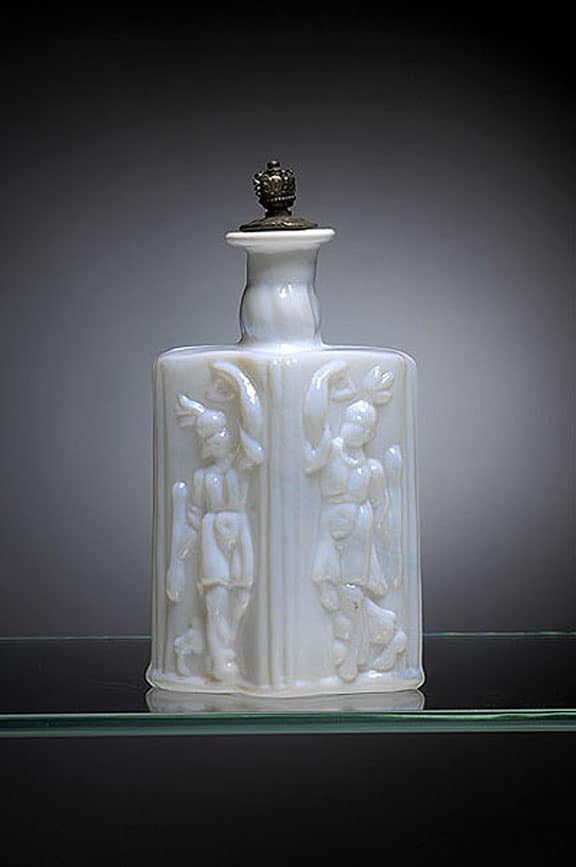
RARE OPAQUE GLASS DANCING INDIAN COLOGNE BOTTLE, American ca 1830-50 rhombus-shaped, mold blown with snap pontil, opaline color with crown-type pewter stopper, 5″ high, less stopper, (McKearin, 1978: plate 394, No. 10: Chiarenza & Slater, 1998: fig. 31). – Cowan’s Auctions
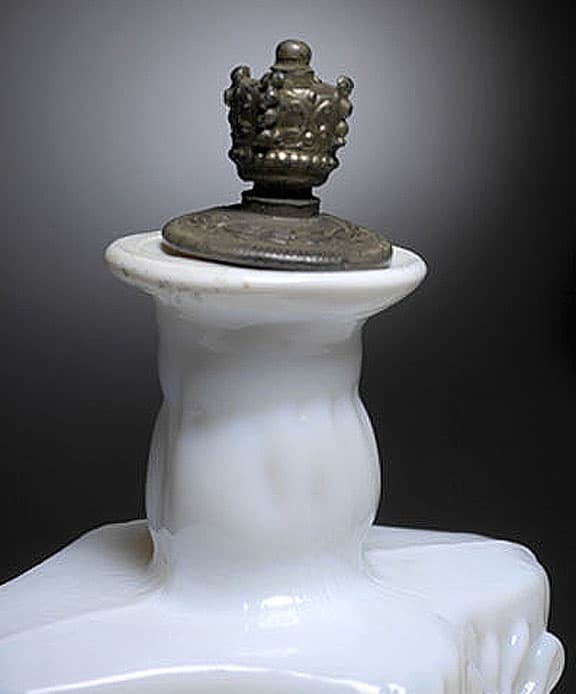
Crown-type pewter stopper detail: RARE OPAQUE GLASS DANCING INDIAN COLOGNE BOTTLE, American ca 1830-50 rhombus-shaped, mold blown with snap pontil, opaline color, 5″ high, less stopper, (McKearin, 1978: plate 394, No. 10: Chiarenza & Slater, 1998: fig. 31). – Cowan’s Auctions
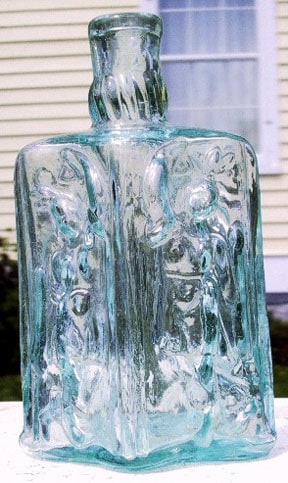 DANCING INDIAN COLOGNE BOTTLE, aquamarine, fancy four-sided cologne, pontil scar, 4 15/16″H, inwardly rolled mouth, about mint (minor exterior wear and a patch of light exterior haze). American, C. 1840, scarce.
DANCING INDIAN COLOGNE BOTTLE, aquamarine, fancy four-sided cologne, pontil scar, 4 15/16″H, inwardly rolled mouth, about mint (minor exterior wear and a patch of light exterior haze). American, C. 1840, scarce.
It is this bottle’s extremely well-detailed mold impression that makes it a standout example of its type.
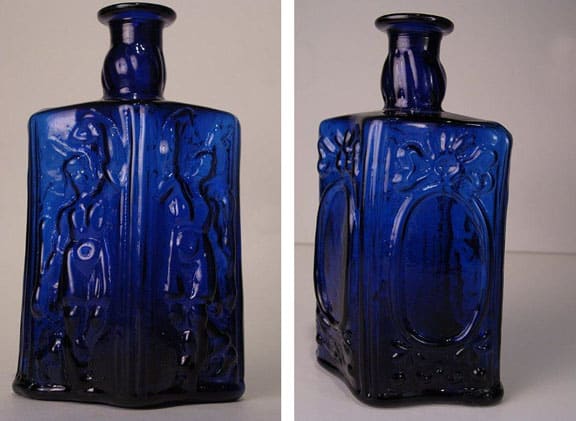
COLORED FIGURAL DANCING INDIAN COLOGNE BOTTLE 4 1/8”h., Dark cobalt, unusual four paneled bottle depicting an Indian wearing three feathered head dress, flared lip, open pontil; American, c.1840-50, a corner of the base was professionally restored using an epoxy and is barely noticeable, otherwise perfect. This beautiful bottle, highly regarded by collectors for its artistic merit and historical significance, may be the only known example in blue glass. It could be quite awhile before you find another example, regardless of the condition. – HistoricalGlass.com
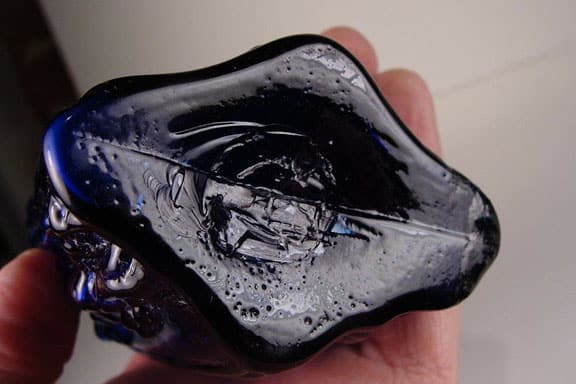
Pontil detail: COLORED FIGURAL DANCING INDIAN COLOGNE BOTTLE 4 1/8”h., Dark cobalt, unusual four paneled bottle depicting an Indian wearing three feathered head dress, flared lip, open pontil; American, c.1840-50, a corner of the base was professionally restored using an epoxy and is barely noticeable, otherwise perfect. This beautiful bottle, highly regarded by collectors for its artistic merit and historical significance, may be the only known example in blue glass. It could be quite awhile before you find another example, regardless of the condition. – HistoricalGlass.com
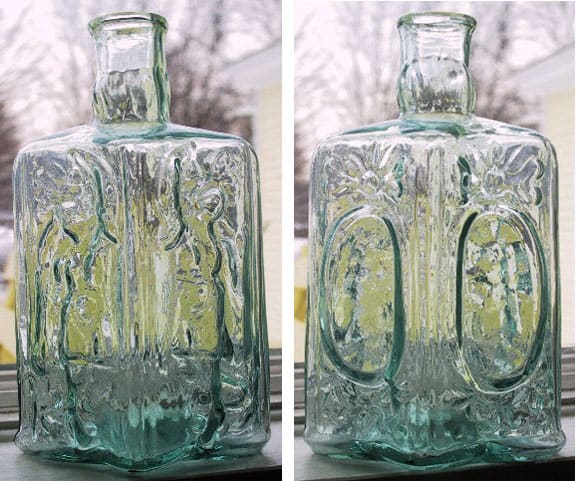
SUPERB DANCING INDIAN COLOGNE – MINT, FANCY COLOGNE BOTTLE, aquamarine, pontil scar, 5″H, inwardly rolled mouth, mint. American, 1820-1840. This superb Dancing Indian cologne bottle is distinguished by a tubular pontil scar that is darn near the size of a quarter! – sold Jeff and Holly Noordsy
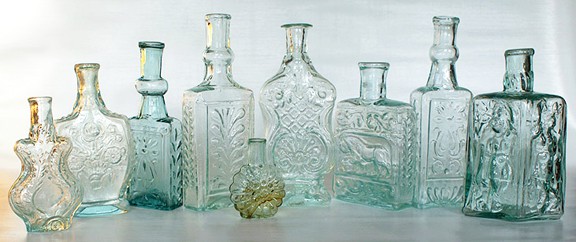
Fantastic Cologne bottle grouping – AntiqueBottleHunter.com – Early Colognes
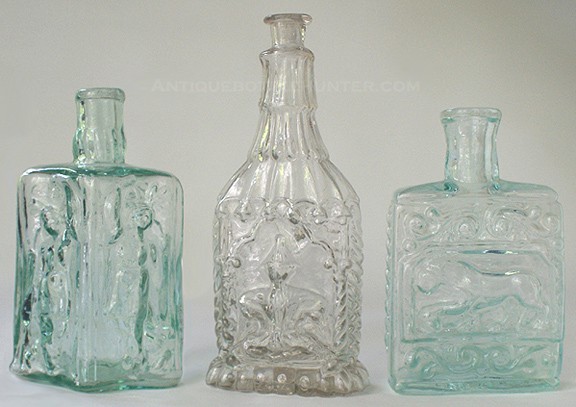
A diamond shaped aquamarine ‘Pocahontas’ also known as the ‘Dancing Indian’ (4 – 7/8 in.) – A colorless ‘Buddha’ with ‘V A’ on back heel and ‘290’ on the heel under the Buddha (6 in.) - A rectangular aquamarine ‘Lion’ (4 – 1/2 in.) All of their bases have a pontil scar. – AntiqueBottleHunter.com – Early Colognes

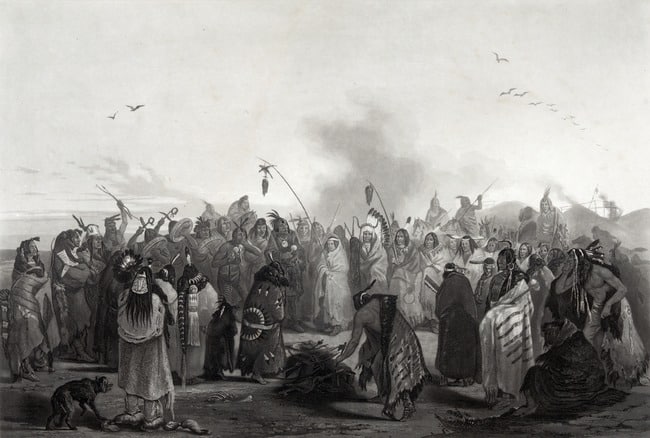






Excellent. There are two Blue “Dancing Indians” in the piece. Any more known?
Years ago a north eastern dealer Dave Goad, remarked that there was a milk-glass “Dancing Indian” in the Ford Museum. He thought it was “unique”. Is the one seen above a second? Are any more known?.
It is a gem in milk-glass, blue or aqua glass.
Thanks, c.a.
In reading a book I have on the New England Glass Company titled Cambridge Glass by Lura Woodside Watkins it explains the difference between common milk glass and the porcelain looking milk glass as can be seen in these two milk glass cologne bottles. The one shown from Cowan’s auction is of the more common type of milk glass where the glass has a fiery opalescent quality when held to a bright light. This common form of milk glass was made by adding arsenic to the batch. The milk glass that has the quality of porcelain or bone china was made by adding crushed bone to the batch and it is not encountered very often. Crushed bone was used for the New England Glass Company’s finest milk glass wares. I am curious if the Katzen example is of lead glass. If it is, it may possibly be a NEGC bottle.
Molds may very well have changed hands over the years and found their way to New England as well as to other regions. The different neck variants being bulbous, slightly bulbous and straight indicate that there were multiple molds, whether they were from the original maker or copied by another artist is anyone’s guess. Keeping in mind that after a glass house closed, workers scattered to find employment where ever they could, sure anything is possible.
The three or four references to this piece that I have found lead me to believe that it should be attributed to a South Jersey or Dyott/Kensington glass house.
Unless I have the necessary destructive testing performed to provide proof positive as to the lead content or lack thereof, one can only surmise. What I can say with certainty is that if you saw this piece up close and personal and compared it with the two dozen or so Sandwich colognes that I have, you would contend that there is is no commonality as to the color and “feel” of the glass.
Hi Gary,
I just remembered that I have the small sized Sandwich corset waisted cologne bottle that is in the same porcelain white type of milk glass as your dancing Indian cologne bottle. If one didn’t know it was glass it could easily be mistaken for porcelain. It would be interesting for us to compare the quality of the glass between our two bottles.
Robert
That’s interesting, I have a 4″ example as well but it’s just that run of the mill Sandwich white. I would like to compare them as well; if you will be attending the Baltimore show next year feel free to stop by my table. Hey, you can just mail me the piece if you like, I might even mail it back if I don’t get too attached to it!
Gary